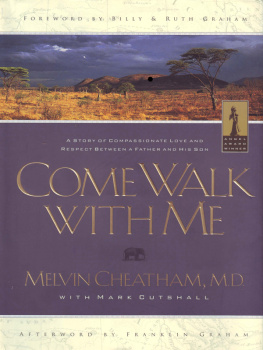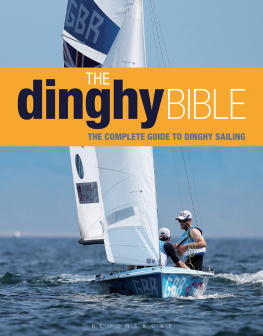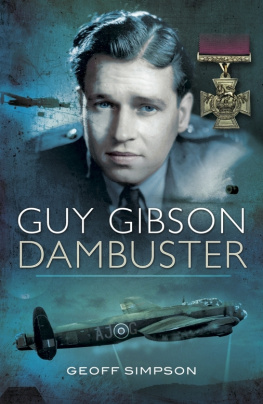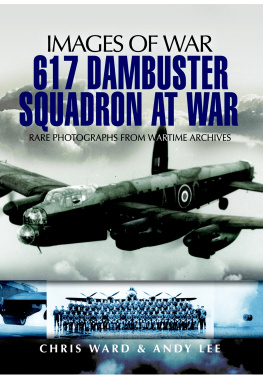First published in Great Britain in 2008 by
Pen & Sword Aviation
an imprint of
Pen & Sword Books Ltd
47 Church Street
Barnsley
South Yorkshire
S70 2AS
Copyright Arthur G. Thorning 2008
ISBN 978 184415 6672
eISBN 9781844682126
The right of Arthur G. Thorning to be identified as Author of this Work has been asserted by him in accordance with the Copyright, Designs and Patents Act 1988.
A CIP catalogue record for this book is available from the British Library
All rights reserved. No part of this book may be reproduced or transmitted in any form or by any means, electronic or mechanical including photocopying, recording or by any information storage and retrieval system, without permission from the Publisher in writing.
Typeset in 11/13 Palatino Linotype by Lamorna Publishing Services
Printed and bound in England by Biddles Ltd
Pen & Sword Books Ltd. incorporates the imprints of Pen & Sword Aviation, Pen & Sword Maritime, Pen & Sword Military, Wharncliffe Local History, Pen & Sword Select, Pen & Sword Military Classics and Leo Cooper.
For a complete list of Pen & Sword titles please contact PEN & SWORD BOOKS LIMITED 47 Church Street, Barnsley, South Yorkshire, S70 2AS, England E-mail: enquiries@pen-and-sword.co.uk Website: www.pen-and-sword.co.uk
To Angela, Rebecca and Edward
without whose help this book could not have
been written
Contents
Acknowledgements
I must start by thanking Mrs Clare Hopkins, Archivist, Trinity College, Oxford who asked me to write a biographical note on Melvin Young for the 2003 College Report, thus starting my research and interest in his story. I must also thank Clare for her continuing support answering my numerous questions, and the recent former President of Trinity, Mr Michael Beloff QC and his secretary Mrs Yvonne Cavanagh.
I also wish to thank most sincerely Melvins family who have been both encouraging and supportive, in particular: his sister Mrs Angela Sturr (Dr Angela Rowan Young MD), his brother-in-law Mr Edward Rawson and his niece by marriage, the late Rebecca Rawson, who generously provided invaluable material left by Melvins wife Priscilla, the late Mr Dodd Young and his cousin and god-daughter Mrs Bridget Corby (nee Nendick).
Melvins schools have been of enormous help in my research and I would like to thank especially: Mr Richardson W. Schell (Headmaster) and Mrs Kathy Nadire, Kent School, Connecticut; Mrs Pam McNeil, The Webb Schools, California; Mr Eddie Smith, Westminster School, London; Mr Nigel Taylor (Headmaster), Amesbury School, Hindhead, Surrey.
With regard to other important aspects of Melvins life I would like to thank: Mr Peter Elliott, Royal Air Force Museum, Hendon; Mr Robert Owen, Official Historian, 617 Squadron Aircrew Association; Squadron Leader Dick Stanton and Mrs Chris Fretwell, Oxford University Air Squadron; Mr Jaap Kroon, Bergen Remembrance and Friendship Association; Mr Brian Riddle, Librarian, Royal Aeronautical Society; the staff of the RAF Air Historical Branch, the National Archives, the Imperial War Museum, The Law Society, Hitchin Library and the British Library Newspaper Department.
Mr John Hawkins of Melvins freemasonry lodge was very helpful with that aspect of the story.
I must also thank the following for help and information:
Mr Harry R. Humphries, Mr Tony Iveson, Mr Ted Wass, Mr John Jackson, Dr John Sweetman, Squadron Leader Ray Leach, Mr Geoffrey Sturr, the late Mr Alan Tyser, Mr Richard Rowland (Kingston RC), Mr Michael Jones (Leander), Mr David Young, Miss Kelly Russell (River and Rowing Museum), Mr David Mitchell, Mr Hugh Disney, Mr Thompson Webb, Mr Alex Bateman, Mr Geoffrey Allsebrook, Mr John Entwisle (Reuters), Mr Les Munro, Mr David Ross, Mr Scott Field (Parkinson Archives), Ms Hazel Simpson (BBC), Mrs Linda Jones, Mr Stephen Nendick, Air Chief Marshal Sir Thomas Prickett, Mr Scott Pottbecker (Marvelwood School, Connecticut), Mrs Elizabeth Boardman (Brasenose College, Oxford), Mr Andrew Mussell (Lincoln College, Oxford), Mr Ian Sayer, Mrs Lorna Read (Naval Historical Branch), Mrs Margaret Taube Harper, Mr Jonathan Falconer, Mr Fred Sutherland, Squadron Leader George Johnson, Mrs Barbara Pettey.
I am grateful to Crecy Publishing Ltd (www.crecy.co.uk) for permission to include extracts from Wellington Wings, by F. R. Chappell.
Finally, I thank my wife Valerie for her consistent help and support in the project of researching and writing this book.
Introduction
At 21.47 on 16 May 1943, Lancaster ED887/G, AJ-A of 617 Squadron, lifted from the grass at RAF Scampton piloted by Squadron Leader Henry Melvin Young, DFC and Bar, as part of Operation Chastise. At 00.43, on 17 May, Young flew low down the Mhne Lake in Germany on a heading of 330 magnetic towards the dam, levelled the 30 ton aircraft at 60 feet above the water at a speed of 220 mph and the Upkeep depth charge was released. It made three good bounces, hit the dam wall, sank to 30 feet, exploded and the dam started to crack. At 02.58, having followed Guy Gibson to the Eder Dam as his second-in-command, Young and his crew were shot down and killed as they crossed the Dutch coast at Castricum-aan-Zee, north of Ijmuiden. Such was Melvin Youngs historic, heroic and tragic last night.
Operation Chastise, the raid on the Ruhr Dams on the night of 16/17 May 1943, was an epic of courage, determination and ingenuity. The physical effect on Germanys war effort was serious, although less than strategic planners had hoped. However, the moral, political and psychological impact, at a time when victory was unsure and distant, was great. Churchill, in Washington at the time, was able to point to this remarkable feat of arms as a signal success.
Melvin Youngs life, leading up to this most famous operation, was notable enough, without this tragic climax. Of Anglo-American parentage, he was educated at several schools on both sides of the Atlantic, before attending Trinity College, Oxford where he achieved a good degree in Law and rowed in the Boat Race against Cambridge. He learned to fly with the Oxford University Air Squadron and, following the outbreak of the Second World War, became a bomber pilot. He had numerous adventures, surviving two ditchings in the sea (thus his nickname Dinghy) and was twice awarded the Distinguished Flying Cross, for operations over Germany, Italy, Malta and the Western Desert. In 1942 a posting took him to the USA where he married Priscilla Rawson, whom he had known since he was at school in America.
Chapter 1
Family Background
Henry Melvin Young, known as Melvin, was born on 20 May 1915 at 11A Lower Grosvenor Place, Belgravia, London. His father, Henry George Melvin Young, was recorded on the birth certificate as a Second Lieutenant, 4th battalion, Queens Royal West Surrey Regiment (a solicitor). His mother was Fannie Forrester Young, formerly Rowan, an American from a socially prominent Los Angeles family.
Lower Grosvenor Place is an imposing row of buildings in the French Empire style, on the Grosvenor Estate, facing the wall of Buckingham Palace garden very much at the heart of the British Empire as it then was. Thus Melvin was, like Winston Churchill, the son of an Anglo-American union; his story reflects this balance of the traditions of the Old World with the energy of the New.











